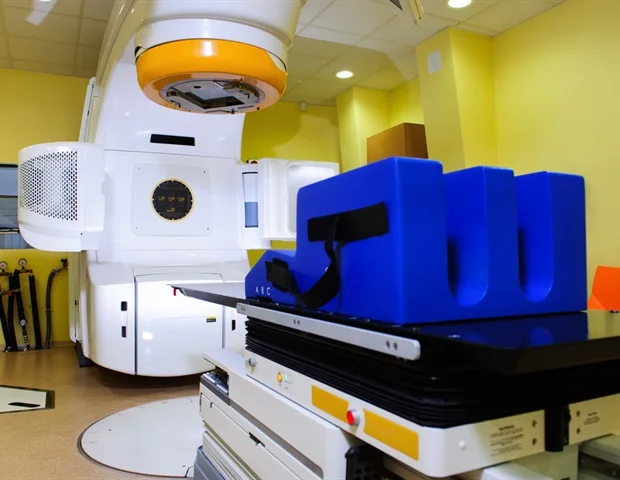
Researchers have developed a new model to optimize radiation therapy and significantly increase the number of tumor cells killed during treatment.
The new mathematical model, outlined in a recent study led by a University of Waterloo student, can use information about where the majority of the cells in a tumor are located allowing for radiation treatment to be administered to the densest area.
Much consideration is currently usually given to optimal scheduling and dosing when radiation therapy is being prescribed, but the researchers found the treatment could be far more effective at killing brain tumor cells if oncologists also use the information on cell density, and irradiate the densest area of the tumor.
Typically, cells in a tumor are packed at a higher density in the middle and less as you go further out, but that fact is not fully taken into account in current radiation treatment. If we have a better understanding of tumor cell density, then we could design treatment in a better way to kill more cells."In developing their mathematical model to spatially optimize radiation therapy in brain tumors, the researchers set a cap on the total dose a patient could receive throughout their treatment. They then divided the tumor into multiple portions: with the area most densely populated with cells being one portion and the remainder of cells the other. In some instances, they prescribed the dosage of radiation given to each portion, and in other cases, they allowed the model to determine the best ratio.
Cameron Meaney, PhD candidate in Waterloo's Department of Applied Mathematics
"It turned out that not necessarily in all cases do you want to distribute the radiation dose evenly between the fractions," Meaney said. "What our model has shown is that perhaps what's best is if we take the total radiation dose that we're allowed to give a patient and administer it over a small area at high strength where the cells are most dense instead of spreading it over a big area with semi-weak strength."
Given the results of their study, the researchers have proposed the following procedure for spatial optimization of radiation: image the tumor twice, determine the dose and treatment schedule, ascertain the physical limitations of the radiation apparatus, then optimize the first radiation fraction using their mathematical model.
Finally, using the growth model deduced from the initial two images to simulate the development of the tumor cells between fractions, oncologists can use the derived cell density profile prior to each instance of radiation application as input to optimize the shape of the radiation beam.
University of Waterloo
Journal reference:
Meaney, C. et al. (2019) Spatial optimization for radiation therapy of brain tumours. PLOS ONE. doi.org/10.1371/journal.pone.0217354.






No comments
Post a Comment